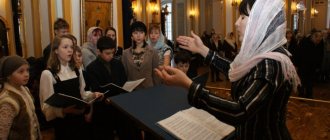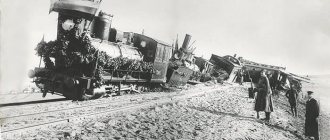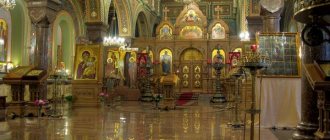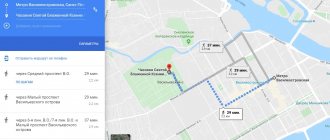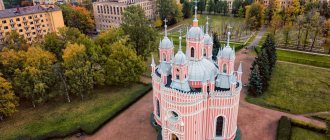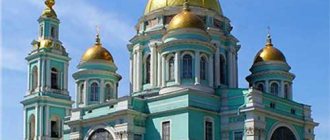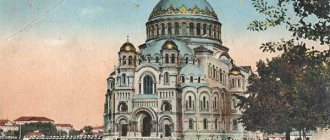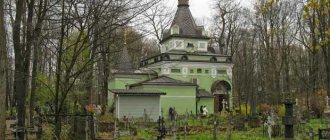Mir
Russia St. Petersburg St. Nicholas Naval Cathedral (St. Petersburg) Map loading in progress...
{"format":"leaflet","minzoom":false,"maxzoom":false,"limit":50,"offset":0,"link":"all","sort":[""], "order":[],"headers":"show","mainlabel":"","intro":"","outro":"","searchlabel":"\u2026 \u0441\u043b\u0435\ u0434\u0443\u044e\u0449\u0438\u0435 \u0440\u0435\u0437\u0443\u043b\u044c\u0442\u0430\u0442\u044b","default":"","import-annotation":false,"width ":"auto","height":"350px","centre":{"text":"","title":"""link":"""lat":59.92297700000000304498826153576374053955078125,"lon": 30.29991400000000112413545139133930206298828125,"icon":""},"title":"","label":"","icon":"","lines":[],"polygons":[], "circles":[ ],"rectangles":[],"copycoords":false,"static":false,"zoom":8,"defzoom":14,"layers":["OpenStreetMap"],"image layers":[] ,"overlays":[],"resizable":false,"fullscreen":true,"scrollwheelzoom":true,"cluster":false,"clustermaxzoom":9,"clusterzoomonclick":true,"clustermaxradius":80, "clusterspiderfy":true,"geojson":"","clicktarget":"","showtitle":true,"hidenamespace":false,"template":"","userparam":"","activeicon": "","pagelabel":false,"ajaxcoordproperty":"","ajaxquery":"","locations":[{"text":"\u003Cb\u003E\u003Ca href=\"/palomnik/%D0% 9D%D0%B8%D0%BA%D0%BE%D0%BB%D0%BE-%D0%91%D0%BE%D0%B3%D0%BE%D1%8F%D0%B2%D0%BB %D0%B5%D0%BD%D1%81%D0%BA%D0%B8%D0%B9_%D0%BC%D0%BE%D1%80%D1%81%D0%BA%D0%BE%D0 %B9_%D1%81%D0%BE%D0%B1%D0%BE%D1%80_(%D0%A1%D0%B0%D0%BD%D0%BA%D1%82-%D0%9F%D0 %B5%D1%82%D0%B5%D1%80%D0%B1%D1%83%D1%80%D0%B3)\» title=\»\u041d\u0438\u043a\u043e\u043b\u043e- \u0411\u043e\u0433\u043e\u044f\u0432\u043b\u0435\u043d\u0441\u043a\u0438\u0439 \u043c\u043e\u0440\u0441\u043a\u043e\u0439 u0441\u043e\u0431\u043e\u0440 (\u0421\u0430\u043d\u043a\u0442-\u041f\u0435\u0442\u0435\u0440\u0431\u0443\u0440\u0433)\»\u003E\u041d\u0438\u043a\u043e\u043 b\u043e-\u0411 \u043e\u0433\u043e\u044f\u0432\u043b\u0435\u043d\u0441\u043a\u0438\u0439 \u043c\u043e\u0440\u0441\u043a\u043e\u0439 \u0441\ u043e\u0431\u043e\u0440 (\ u0421\u0430\u043d\u043a\u0442-\u041f\u0435\u0442\u0435\u0440\u0431\u0443\u0440\u0433)\u003C/a\u003E\u003C/b\u003E\u003Chr /\u0 03E\u003Ca href= \"/palomnik/%D0%A1%D0%B2%D0%BE%D0%B9%D1%81%D1%82%D0%B2%D0%BE:%D0%90%D0%BD%D0%BD %D0%BE%D1%82%D0%B0%D1%86%D0%B8%D1%8F\" title=\"\u0421\u0432\u043e\u0439\u0441\u0442\u0432\u043e:\u0410\ u043d\u043d\u043e\u0442\u0430\u0446\u0438\u044f\»\u003E\u0410\u043d\u043d\u043e\u0442\u0430\u0446\u0438\u044f\u003C/a\u003E: "\u041d\u0438 \u043a\u043e\u043b\u043e-\u0411\u043e\u0433\u043e\u044f\u0432\u043b\u0435\u043d\u0441\u043a\u0438\u0439 \u043c\u043e\u0440\ u0441\u043a\u043e\u0439\ u0441\u043e\u0431\u043e\u0440"' \u2014 \u043f\u0435\u0440\u0432\u044b\u0439 \u043c\u043e\u0440\u0441\u043a\u043e\u0439 \u044 1\u043e\u0431\u043e\u0440, \u0442\u0440\u0430\u0434\u0438\u0446\u0438\u043e\u043d\u043d\u043e \u043e\u043a\u043e\u0440\u043c\u043b\u044f\u0432\u0448\u 0438\u0439\u043c\u043e\u0440 \u044f\u043a\u043e\u0432 \u0440\u0443\u0441\u0441\u043a\u043e\u0433\u043e \u0444\u043b\u043e\u0442\u0430.","title":"\u041d\u0438 \u043a\u043e \u043b\u043e-\u0411\u043e\u0433\u043e\u044f\u0432\u043b\u0435\u043d\u0441\u043a\u0438\u0439 \u043c\u043e\u0440\u0441\u043a\ u043e\u0439 \u0441\u043e\ u0431\u043e\u0440 (\u0421\u0430\u043d\u043a\u0442-\u041f\u0435\u0442\u0435\u0440\u0431\u0443\u0440\u0433)","link":"","lat":59.922977 00000000304498826153576374053955078125 ,"lon":30.29991400000000112413545139133930206298828125,"icon":""}],"imageLayers":[]}
59.922634; 30.300139
Russia, St. Petersburg, Nikolskaya Square
Saint Petersburg
Russia
Telephone:
+7 812 714 70 85,, +7 812 714 08 62
Email:
St. Nicholas Naval Cathedral
- the first naval cathedral, which traditionally cared for the sailors of the Russian fleet. What makes the cathedral especially valuable is the fact that the temple has preserved to this day its historical appearance and interiors as they were seen by kings, bishops and laymen for more than 200 years.
History[edit]
Chapel, linen and wooden churches
At first, the life of St. Petersburg centered around the main shipyard - the Admiralty. Behind the esplanade of the Admiralty was the Morskaya Settlement, where many people settled who worked on the birth of a powerful fleet. For the spiritual nourishment of officers and employees of the Naval Department, several churches were built near the Admiralty. In 1710, a small wooden church was built on the Admiralty Meadow in the name of St. Isaac of Dalmatia, which was under the jurisdiction of the Admiralty Board. A little later it was rebuilt in stone. In 1730, this temple came under the jurisdiction of the Spiritual Board, and the parish was assigned to a small chapel located in the Morskaya Sloboda in the “svetlitsa” of the regimental courtyard. It was consecrated in honor of the heavenly patron of sailors - St. Nicholas the Wonderworker. This chapel was the only one in the vast space behind the Moika and therefore was distinguished by its rich decoration.
In 1733, instead of a chapel, a linen church was built in the name of the same saint.
In 1743 it was replaced by a separate wooden church. The church's congregation was significant: 3,384 naval employees, not counting wives and children. To the west of the church there was a naval cemetery. The wooden church existed until the beginning of 1761.
Construction of a stone temple
In the spring of 1752, the President of the Admiralty Collegium, Admiral General Prince Mikhail Mikhailovich Golitsyn, submitted a petition to Empress Elizabeth Petrovna: “In reward of the worthy memory of the glorious deeds of the Russian Navy...” at the expense of the Naval Department and voluntary donations, to erect a stone church in the city of St. Peter in honor of the patron saint of sailors - Saint Nicholas the Wonderworker. On June 16, Empress Elizaveta Petrovna signed a decree on the construction of a new stone church to replace the dilapidated wooden St. Nicholas Church. The development of the project for the new temple was entrusted to the architect of the Admiralty College, Savva Ivanovich Chevakinsky. Money for the construction was ordered to be allocated from the “bridge funds”, but it turned out to be insufficient, so the rest was taken from the Admiralty funds. All church utensils were also purchased by the Admiralty College.
The first project for the cathedral was submitted by Savva Ivanovich in May 1752. Initially, it was planned to be much smaller than the current one, but frequent floods forced changes to be made so that the cathedral would not suffer from excess water. It was decided to raise the cathedral so that during floods the floor would not be covered with water. This forced us to change the dimensions of the building in order to maintain symmetry and proportions.
The modified project was approved, and on June 15, 1753, by order of Elizabeth Petrovna, Archbishop of St. Petersburg Sylvester (Kulyabka) laid the foundation stone for the church.
By 1756, work began on the exterior decoration of the temple. Difficulties were caused by the production of metal structures for the chapters. To order them, the architect personally went to Tula to see the owner of the ironworks, P. A. Demidov, who provided all possible support for this matter.
By the autumn of 1760, crosses were erected on the temple.
In 1755, when the walls of the cathedral were just being roofed, work on interior decoration began in advance.
Simultaneously with the construction of the cathedral, a bell tower was being built nearby. The location for it was chosen to the west of the cathedral. Work began in 1756, and by 1758 the bell tower was completed and plastered. At the same time, the bells were raised and the clock with chimes was installed. By that time, the bell tower of St. Nicholas Cathedral had one of the best sets of bells in St. Petersburg.
The lower church in the name of St. Nicholas was consecrated by Archbishop Sylvester on December 5, 1760, on the eve of the temple feast. On the same day, the right aisle of the lower church was consecrated in honor of the Beheading of St. John the Baptist.
On July 20, 1762, Archbishop Benjamin of St. Petersburg, in the presence of Empress Catherine II, consecrated the upper church in honor of the Epiphany and the lower left chapel in honor of the newly glorified St. Demetrius of Rostov. At the same time, the Empress “orally commanded” the newly consecrated church to be called the Naval Cathedral. From that time on, the victories of the Russian fleet began to be celebrated in St. Nicholas Naval Cathedral.
Since then, the temple has changed only slightly. In 1845, the gates of the main boundary of the lower temple were replaced, due to the fact that the previous ones had become dilapidated and the carvings were already difficult to hold on to them. The new gate was made according to the same design, but slightly smaller than the previous one.
In 1862, the wooden stairs leading to the upper temple were replaced with stone ones.
In 1870, the Society for the Welfare of the Parish Poor was founded at the cathedral.
After the temple was transferred to the Naval Department in 1901, stoves were installed in the upper temple, and it became warm.
On May 14, 1908, the grand opening of a monument in memory of the heroes of the Russian-Japanese War took place in the park of the Naval Cathedral.
In 1913, the head of the cathedral, merchant of the 1st guild Alexei Ivanovich Ivanov, made a new throne and altar: metal, gilded, chased and sculpted, with artistic painting in medallions.
Years of persecution
The October Revolution and the coming to power of the Bolsheviks immediately affected the position of the cathedral. Within a few months his status changed. On April 6, 1918, St. Nicholas Cathedral became a parish cathedral.
All cathedral property and capital, according to the decrees of the Soviet government, were subject to nationalization. In May 1919, the Petrograd Department of Justice, threatening members of the clergy with court, demanded that all bank documents be presented. According to the inventory, capital in the amount of 147,392 rubles was transferred to the treasury. Soon it came to church property. A complete inventory was compiled. At a meeting of parishioners, an agreement was signed with a representative of the district executive committee on the official transfer of the cathedral with all its equipment “for free and indefinite” use to a group of believers.
During its existence, the St. Nicholas Naval Cathedral accumulated the richest values. In April 1922, during a campaign to confiscate church valuables, several dozen items of church utensils, weighing a total of 328 kilograms, were confiscated from the cathedral. Some of the shrines were bought by parishioners, who contributed an equal amount of silver. None of the members of the clergy at this time were arrested or convicted.
The cathedral was one of the first centers of the fight against the renovationists. At a meeting of the cathedral parishioners on July 23, 1922, a decision was made to form Petrograd autocephaly. A report was heard from the rector, Archpriest Alexander Belyaev, on the history of the Higher Church Administration and the Petrograd Diocesan Administration. At the end of the report, the rector pointed out that, on the basis of the decree on freedom of conscience and other regulations, each parish community has the right to independent existence, and no other organization can dispose of it without its will. This view was expressed in the resolution.
Such resistance was met negatively by the authorities. At the head of the Petrograd autocephaly was Bishop Alexy (Simansky), the future Patriarch, and Nikolai (Yarushevich), the governor of the Alexander Nevsky Lavra. The authorities traditionally began to undertake repression to combat this movement. On October 26, a group of priests was exiled to Central Asia for 3 years, and Bishop Alexy (Simansky) of Yamburg was exiled to Kazakhstan. Bishop Nikolai (Yarushevich) of Peterhof became the head of the resistance movement. In a short period of time, the number of parishes that broke with the Renovationists increased to 65. During this period, Bishop Nicholas very often performed divine services in the cathedral. In 1923, he, as well as the rector of the cathedral, Archpriest Alexander Belyaev, were arrested and deported.
Archpriest Nikolai Rusanov was appointed rector of the Epiphany Cathedral, and the temple was captured by the renovationists for several months. On July 22, 1923, renovationist priests were expelled from the cathedral. However, repressions soon struck again and the renovationists took advantage of this. In September, Archpriest N.N. again became rector. Rusanov.
Unique valuables were confiscated from the temple: Gospels in silver frames, icons, silver frames, a set of silver vessels. The lower temple was not heated, which led to dampness.
In January 1924, the temple again returned under the omophorion of Patriarch Tikhon, and in March, Archpriest Nikolai Kirillovich Chukov, the future Metropolitan of Leningrad Gregory, became the rector of the temple. Through his efforts, not only the cathedral was restored, but also the bell tower. On November 23, the celebration of the “renewal of the temple” took place.
The confiscation of valuables belonging to St. Nicholas Cathedral continued. In addition, attempts to steal from the temple have become more frequent. Measures were taken against this with additional duty, however, thefts could not be completely avoided. At the same time, Orthodox churches were closed everywhere and the cathedral more than once had to accept the remaining icons and shrines.
On July 9, 1934, 13 bells with a total weight of 20,408 kilograms were removed from the bell tower of St. Nicholas Cathedral. At the same time, the confiscation of church valuables continued and the arrests of clergy did not stop.
By the early 1940s, the wave of persecution began to subside a little, but the vast majority of churches had already been closed. By 1941, the Leningrad diocese consisted of 21 active Orthodox churches, of which 8 were in Leningrad itself. The number of surviving clergy did not exceed 20 people, of which five served in the St. Nicholas Cathedral.
Middle and second half of the 20th century
In June 1941, the St. Nicholas Cathedral became a cathedral. For almost the entire period of the Great Patriotic War, right up to the moment of his accession to the patriarchal throne, Metropolitan Alexy (Simansky) lived and served here.
On his initiative, the collection of donations from believers for the defense fund began on June 23. The community of St. Nicholas Cathedral contributed 355 thousand rubles in the first months of the war, and by the beginning of 1942 - another 60 thousand. The total amount of contributions from the St. Nicholas Cathedral during the Great Patriotic War amounted to 4,703,598 rubles. This amount was equal to 30% of all contributions from the Leningrad diocese, and not a single church of the Russian Orthodox Church, with the exception of the Elokhov Cathedral in Moscow, contributed more.
In August 1941, camouflage of the domes began using covers, nets and camouflage painting. But painting was rarely used so as not to damage the gilding. The work was completed by September 1942.
With the onset of the blockade, services in the cathedral were held daily from 8 to 10 o'clock and from 16 to 18 o'clock. Responsible air defense duty officers were appointed from among the parishioners to guard the temple. At first, when the alarm sounded, the worshipers went to bomb shelters, but then they got used to it and the services were often not interrupted. During the days of the siege, Vladyka Alexy served the Divine Liturgy alone without a deacon, read the commemorations himself and every evening served a prayer service to St. Nicholas, and then walked around the St. Nicholas Cathedral with the icon of the Pleasant, praying to Him to save the temple and the city from destruction.
During the war, the cathedral was seriously damaged by shelling and bombing. The temple was finally restored by 1953. In the 1940-1950s, the number of parishioners of the temple grew steadily.
In the autumn of 1958, the so-called “Khrushchev persecutions” began. The diocesan clergy was purged and the most uncompromising priests were expelled, including several from the St. Nicholas Cathedral. The life of the cathedral during this period is described in detail by the report of the rector, Archpriest Alexander Medvedtsev, to the Leningrad Commissioner of the Council for the Affairs of the Russian Orthodox Church G.S. Zharinov dated November 19, 1963. The report says that services are conducted without undue pomp, although in accordance with established traditions. The number of akathists has been reduced, and liturgies on Sundays are performed not by a conciliar, but by one priest due to the lack of clergy. Preaching is also shortened, and does not even always take place on Sundays, because sermons must be submitted for verification, which requires time. The overwhelming number of parishioners were elderly women over the age of 45, men made up no more than 10%, and there were not even 1% of young people.
In the 1970-1980s, the activities of the cathedral did not go beyond the scope of liturgical life. Church life in Leningrad intensified only on the eve of the celebration of the millennium of the Baptism of Rus' in 1988. In St. Nicholas Cathedral, several dozen people were baptized every day, and the number of parishioners increased significantly. The clergy received the opportunity to carry out spiritual, educational, missionary and charitable activities.
Architecture and interior decoration
The Astrakhan Cathedral, which Peter I really liked when visiting the city, was taken as a model for the temple. He intended to build the same one in St. Petersburg, but the premature death of the emperor prevented the execution of his plan. However, the similarity of these cathedrals is limited, perhaps, only to the five domes. This was rare for St. Petersburg at that time, since for half a century churches had been built on the model of the Peter and Paul Cathedral - single-domed, hall-type, with a spire on the bell tower. The appearance of five-domed churches during the time of Elizabeth Petrovna was seen as a return to the Russian Orthodox tradition.
The construction of the cathedral was supervised by architect S.I. Chevakinsky with the help of stone craftsman Mikhail Alekseevich Bashmakov. Chevakinsky envisaged the construction of an Orthodox church “in two apartments” (two floors) with vaults in the shape of an equal cross. The building was gracefully decorated with columns mounted in groups of three on high pedestals. The church was crowned by five magnificent towers with gilded domes and openwork crosses, of which the central one is octagonal - slightly higher than the side ones - tetrahedral.
Chevakinsky made a sketch of the iconostases of the upper and lower churches and compiled a list of necessary icons. Fedot Lukich Kolokolnikov was entrusted with painting the necessary icons for the iconostasis of the upper church. The Kolokolnikov brothers - Fedot, Mina and Ivan - were well known in St. Petersburg as the best painters; they took part in the painting of many temples and palaces, and painted images for the palace church in Tsarskoe Selo.
Mina Kolokolnikov was entrusted with painting images for the iconostasis of the lower church. It was supposed to paint 42 images, but their plots were not as complex and not as large as in the upper temple. As soon as the construction was completed and the iconostasis itself was prepared, the icons were delivered to the temple and placed in it.
Carved iconostases, made in the same style, for the upper and lower churches were made by a group of Admiralty carvers led by Ignatius Filimonovich Kanaev. The abundance of columns decorated with garlands of flowers, flutes filled with shoots running upward, and Corinthian capitals echo the lush exterior decoration of the temple. The work on installing the iconostases was completely completed in both churches by mid-1760.
The icons are painted on boards in a style characteristic of the decoration of St. Petersburg churches in the 18th century and are a typical example of combining icon painting techniques with secular Western European painting. In addition, the state theme is clearly visible in the iconostasis of the upper church. On the right side of the iconostasis, among the temple icons, there is an image of St. ap. Peter, reminiscent of Peter the Great, and on the left side there are icons of the heavenly patrons of Empress Elizabeth Petrovna - St. Elizabeth; heir to Tsarevich Peter Feodorovich (future Peter III) - Saint Ianuarius (on his birthday) and his wife Ekaterina Alekseevna (future Empress Catherine II) - Saint Catherine, as well as an icon of Saints Clement of Rome and Peter of Alexandria - their accession to the throne falls on the day of their memory Elizaveta Petrovna.
The upper temple in honor of the Epiphany is especially magnificent. Numerous pylons divide the temple into 7 naves of varying lengths. The carved royal doors resemble golden lace. In the center of the temple, on the northern pillar closest to the iconostasis, there is a preaching pulpit, from which in ancient times royal decrees and announcements of the victories of the Russian fleet were read. At the southern pillar there is a “royal seat”, decorated with gold carvings and upholstered in dark crimson velvet. Russian tsars and queens often visited here.
In the sails of the central drum, instead of the traditional image of the evangelists, the Russian imperial coat of arms, supported by angels, is placed in the northeast and southwest, and the monogram of Elizabeth Petrovna “E I” is placed in the southeast and northwest. In the drum itself, under the light windows, in 1830, images of the four evangelists and four picturesque scenes were painted: the Transfiguration of the Lord, the ascent of the prophet Elijah on a fiery chariot, the Resurrection of Lazarus and the Healing of the Paralytic.
The three-tier chandelier also attracts attention. An angel hovers directly below him with a palm branch and a crown in his hands. The first tier contains cast sculptures of the Savior, John the Baptist and the four evangelists. The height of the figures is about 35 centimeters. The second tier contains 6 angels, and the third - six urns with flames. The structure is crowned by an angel standing on a cloud. The chandelier was brought from Nuremberg and was made of copper. The chandelier was already gilded in St. Petersburg.
Architectural features
The style is a unique example of monumental baroque. It is also called Elizabethan Baroque because of Elizabeth Petrovna, who ruled at that time.
Most of the architectural works erected in this style have a characteristic level of scale of buildings, as well as pretentiousness of internal and external design.
Royal Doors of St. Nicholas the Wonderworker and Epiphany
It is important to know: in 1975, Archpriest Boris Glebov was appointed rector, who later became rector of St. Isaac's.
The building itself has a cruciform layout, classic for this style, as well as a five-domed arrangement of the main decorative elements of the upper tier. The front part of the building is made in a two-color, brightly decorative image, characteristic of the Russian Baroque architectural style.
The most basic element is the five domes that are located above the roofs of certain parts of the building. Next to the main building there is a large four-tier bell tower with a tall pointed spire.
Not far from the church there is a four-tiered bell tower, forming a single architectural ensemble
Initially, this building was designated everywhere as a “naval regimental church.” This is what determined that it went down in history as the main symbolic temple that unites Russian sailors.
After a certain time, a memorial obelisk was also erected nearby. It was built in honor of all the sailors who died in naval battles.
Also, by the end of the 20th century, it was decided to erect memorial signs and icons in the temple to the crew who died in the Soviet submarine Komsomolets, as well as to all those ministers who did not return home from the sea in due time. A memorial service is held annually in August. It is dedicated to those sailors who died on the Kursk submarine.
Please note: Although St. Nicholas Cathedral is the oldest, it is not the only one built for sailors.
Current state[edit]
The cathedral is open daily from 6.30 to 22.00.
On Saturdays and Sundays, classes are regularly held to study the Sacred History of the Old and New Testaments for children and adults in the upper church of the cathedral.
During classes with adults, attention is paid to the inner life of the Church and the St. Petersburg diocese, and explanatory work is also carried out about the harm caused to the human soul and heart by psychics and other modern magical phenomena that are contrary to the spirit of Christianity. Special topics are devoted to non-Orthodox confessions (Catholicism, Lutheranism, Protestantism) and sects (Jehovah's Witnesses, Mormons, etc.), as well as Judaism and Islam.
At boarding school No. 37 in St. Petersburg, prayer services are held twice a year, on Easter week and after the feast of Epiphany. Clergy take part in school holidays. High school children attend services in the cathedral.
In the days of the tragic death of the diesel and nuclear submarines “Kursk” and K-19 and others, memorial services are held in the presence of civil and military authorities, submariners, and the families of the dead sailors.
The clergy of the cathedral has care for the city hospital of St. Nicholas No. 17, the Maximilian hospital with a gerontological department, the Military Medical Academy, the 1st Naval Clinical Hospital, and medical.
How to get to St. Nicholas Cathedral
St. Petersburg is connected to other Russian cities and neighboring countries by many roads and railways. It is not difficult to get to the “northern capital” by air. It would be pointless to list flight and train numbers - there are too many of them.
Finding the St. Nicholas Cathedral while in St. Petersburg is quite simple. You should take the metro to the Sadovaya station (Spasskaya and Sennaya Square are also relatively close), go upstairs and follow the street of the same name to the Kryukov Canal (you need to move in the direction of increasing the numbers on the buildings). Then you need to turn right and use the Krasnogvardeisky pedestrian bridge, which leads almost to the bell tower itself - this is where the entrance is located.
© Sergey Makhinin
In addition, a visit to the St. Nicholas Cathedral is included in some of the city sightseeing tours.
Shrines[edit]
- The miraculous image of St. Nicholas, Archbishop of Myra in Lycia, the Wonderworker with a particle of relics (Greece, 17th century)
- "Tikhvin" Icon of the Mother of God
- Particle of the Life-Giving Cross of the Lord
- Icon of the Mother of God “Three-Handed”
- Kazan Icon of the Mother of God
- Icon of the Mother of God “Burning Bush”
- Icon of the Mother of God “The Sign”
- Icon of the Mother of God “Vladimir”
- Icon of the Mother of God “Vsetsaritsa”
- Icon of the Mother of God “Inexhaustible Chalice”
- Cathedral of Icons of the Mother of God
- Icon of the Archangel Michael with a sword
- Piece of the Ark of St. Nicholas the Wonderworker
- Cancer St. Theodosius of Chernigov
- Icon of the Presentation of the Lord
- Icon of the Prophet, Forerunner and Baptist John
- Icon of St. Spyridon of Trimythous
- Military medical center icon. Catherine
- Icon of the Great Martyr. St. George the Victorious
- Icon of the Great Martyr. Panteleimon
- Icon sschmch. Veniamin Petrogradsky
- Icon of the saint Ksenia of Petersburg
- The icon is right. John of Kronstadt
- The icon is right. Simeon the God-Receiver
- Icon of St. Gennady Kostromsky
- Reliquary:
In the central part of the reliquary there is a particle of the tree of the Life-giving Cross of the Lord, around which there are particles of the relics of: the Apostle and Evangelist Luke, the Prophet, Forerunner and Baptist of the Lord John, the Apostle James (brother of the Apostle John the Theologian), the Apostle James, brother of the Lord, St. Basil the Great and the Prophet Jeremiah .
Top row of relics: sschmch. Pancratius of the Bishop of Tauromenia, St. John the Merciful, St. Ambrose of Milan, St. Athanasius of Alexandria, ap. Andrew the First-Called, St. Sophronius of Jerusalem, St. Nikephoros Patriarch of Constantinople, St. Paul the Confessor of the Patriarch of Constantinople, St. Tarasius Patriarch of Constantinople.
Second row of relics: St. Averkia Bishop Ierapolsky, sschmch. Eleutheria, St. Gregory the Illuminator of Armenia, smch. Ignatius the God-Bearer, smch. Anthima of Nicomedia, sschmch. Theophylact of Nicomedia, smch. Ermolaya, martyr. Artemia.
Third row of relics: martyr. Kaliopia, m. Evlampia, martyr. Andronika, martyr. Anastasia Persyanina, martyr. Tryphon, martyr. Nestor, sschmch. Christopher, martyr. Sebastiana.
Bottom row of relics: St. Peter of Athos, martyr. Chrysantha, martyr. John the Unmercenary, martyr. Photinia (Svetlana) of Samaria, martyr. Panteleimon, martyr. Paraskeva Pyatnitsa, martyr. Mines, martyr. Izmaragda (Smaragda), St. Theodore the Inscribed.
More details on the cathedral website
Activities of the parish
The cathedral has a Sunday school not only for children, but also for adults. There is also a Youth Union for people who are interested in studying Orthodoxy.
Sunday School for Adults
Meetings are held weekly on Friday at 5 pm. At meetings, church ministers raise issues of studying the Christian church and traditions of worship, as well as issues of the history of the general church church. Absolutely anyone can attend the classes.
Sunday school for children
Since the 20th century. The cathedral houses a Sunday school for children. The main purpose of education is to help children become worthy Christians. Lessons take place every Sunday from 13:00 to 14:00.
Children from 7 to 14 years old attend the school. There is also a special class for younger children. The school is taught by temple clergy.
For church holidays, students prepare productions or performances. The school offers additional classes in:
- beading;
- drawing;
- learning English.
Children participate in pilgrimage trips. During trips, children are told the history of the holy places of St. Petersburg. Enrollment into the school takes place on September 1, by the school director, Archpriest Bogdan.
Children's choir
During classes, children learn liturgical chants, after which they sing them at services. For students, a Liturgy is held once every 2 months, at which children are taught. Boys who have received the abbot's blessing can be assistants at services.
St. Nicholas Youth Union
It began operating in 2010 with the blessing of Archpriest Bogdan. People who want to study the Faith and participate in the activities of the temple join this club. In most cases, the participants of this club are parishioners of St. Nicholas Cathedral.
The Youth Union has the following goals:
- Possibility of communication. To prevent young people from feeling lonely, the club helps young people find friends and a common language.
- Spiritual education. Lectures on Christian doctrine are held for members of the union. The lectures examine such aspects of the church as: the study of Orthodoxy, knowledge of the Holy Scriptures.
- Education activities. The goal is to introduce non-believers to Orthodoxy or help those who doubt it.
- Charity. Actively helping people in need. Visiting and helping the infirm, elderly and lonely people, children in orphanages.
Club meetings are held every month.
Patronal holidays[edit]
- Epiphany (Epiphany)
- January 19 - Nicholas the Wonderworker, Archbishop of Myra, Saint
- May 22, December 19 - Church of the Nativity of John the Baptist
- July 7 - Beheading of the Prophet, Forerunner and Baptist of the Lord John
- September 11 - Demetrius of Rostov, saint
- October 4 (discovery of relics), November 10
Time of Persecution
All the things and savings of the temple were transferred to the treasury. Some shrines were bought by wealthy parishioners of the temple and returned back to the cathedral.
The cathedral was the center of resistance movements. To fight the resistance movement, the authorities carried out repression among the clergy. After sending some representatives of the clergy of the St. Nicholas Cathedral to the far reaches of Russia, clergy from the ranks of the Renovationists were sent to the cathedral.
As a result, the following were removed from the church:
- Silver plated Bible and silver frames.
- Some icons.
- Set of silverware.
The temple itself was not heated, which led to the plaster crumbling and its slow destruction. Only in 1924 was a rector appointed to the cathedral from someone other than the renovationist movement, but the confiscation of shrines and repression of clergy continued. The theft of shrines from the temple began. Therefore, duty officers were appointed. In 1934, 13 bells were removed from the temple.
By 1940, the wave of persecution began to subside. St. Nicholas Cathedral is one of the few churches in St. Petersburg that survived years of persecution.
Pilgrim[edit]
From 13:00-14:00 and from 15:00-16:00 the priest has the opportunity to conduct catechetical and missionary conversations with parishioners, as well as those preparing to receive the sacrament of Holy Baptism and Wedding
Pilgrims and tourists visiting the cathedral during non-liturgical times have the opportunity to listen to a tour with a qualified story about the history, shrines and worship of the St. Nicholas Naval Cathedral by prior agreement.
There is a priest on duty in the temple throughout the day.
Schedule of services:
Two Liturgies are served daily at 7:00 and 10:00.
Confession before Liturgy at 6:45 and 9:45.
Evening services at 18:00.
Akathists at 18:00: on Sundays - to the Sweetest Jesus and the Mother of God alternately; Wednesdays - St. Nicholas the Wonderworker; on Thursdays (except for the days of pre-celebration and post-celebration) - St. Theodosius of Chernigov and St. Dimitri Rostovsky alternately.
On Mondays and Fridays at 08:00 - Blessing of water.
The Sacraments of Baptism, Wedding and Blessing of Anointing (Unction) are performed in the church.
For more information, see the official website of the temple
Iconostasis and interior decoration
In the interior of the St. Nicholas Cathedral of the Epiphany, the “gallant age” was not reflected as clearly as in its external appearance. Much here is reminiscent of the traditional decoration of Orthodox churches. To notice the trends that were fashionable during the times of Elizabeth and Catherine II, you should take a close look at the icons. Their authors were the Kolokolnikov brothers, Fedot and Mina. Both of them were among the best artists of those years.
© Official website of the St. Nicholas-Bogorodsky Naval Cathedral
“The Burning Bush” was clearly drawn not without the influence of European painting of the 18th century. The same can be said about many other icons, for example, about “The Presentation of the Lord.”
© Official website of the St. Nicholas-Bogorodsky Naval Cathedral
Also noteworthy is the selection of images of saints for the Epiphany Church located on the second floor of the cathedral. Among them it is easy to notice the heavenly patrons of the ruling dynasty - Peter, Elizabeth and Catherine.
A notable detail of the interior are the carved iconostases. Their original author was I.F. Kanaev, but at the beginning of the 19th century it was necessary to carry out restoration, since the wood had become very dilapidated. The craftsmen tried to follow the original model in everything, but, unfortunately, the current iconostasis cannot be called a complete copy of the original.
Times of Khrushchev
In 1958, a wave of “Khrushchev persecutions” began, as a result of which the most unyielding clergy were exiled from the diocesan clergy. There were also several expelled clergy from St. Nicholas Cathedral. During these years, the life of the cathedral changed.
A number of changes:
- The number of akathists has been reduced.
- Liturgies on Sundays are not performed conciliarly.
- Sermon time has been shortened.
- Divine services should be held without unnecessary idleness, but traditions had to be respected.
Only since 1988 did the number of parishioners in the cathedral begin to grow, and the temple received permission to carry out religious and charitable activities.
